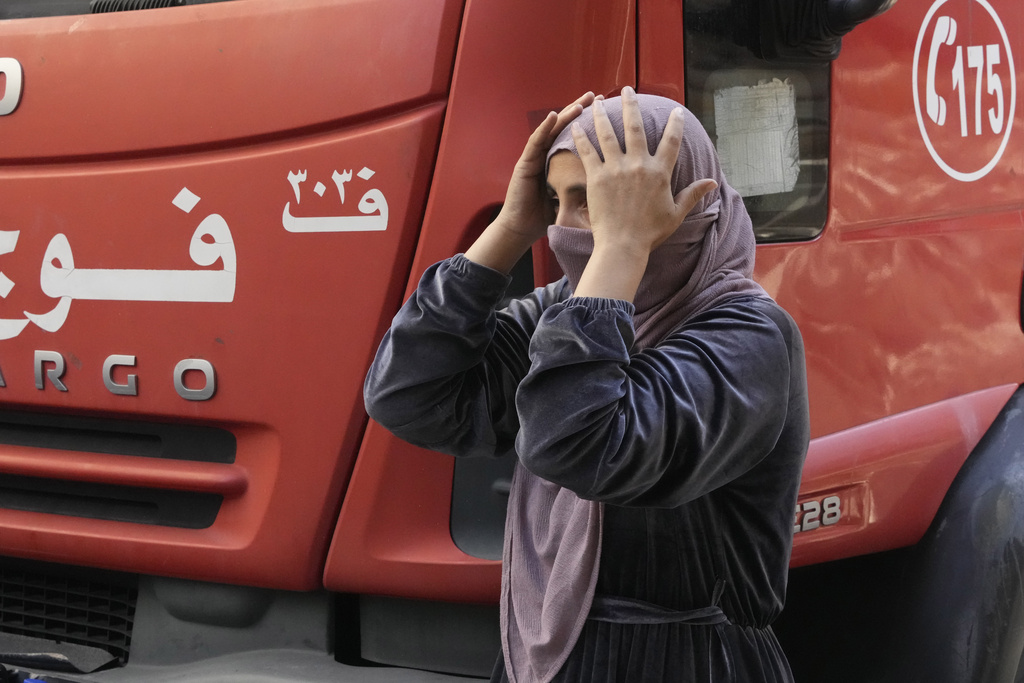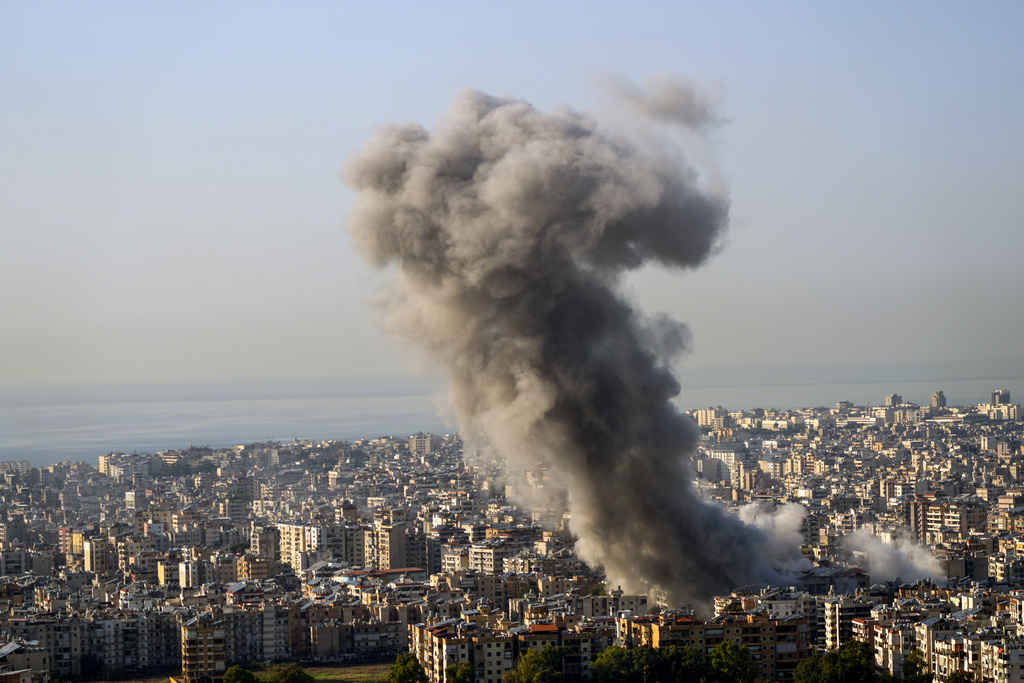Israeli Airstrikes Kill 20 in Central Beirut \ Newslooks \ Washington DC \ Mary Sidiqi \ Evening Edition \ Israeli airstrikes on Beirut killed 20 people and wounded 66, marking a sharp escalation in attacks on Lebanon’s capital. Additional strikes across Lebanon and Gaza continue to devastate civilian populations, with over 44,000 Palestinians killed in Gaza during the 13-month conflict. Cease-fire negotiations remain at an impasse, with disputes over border control and monitoring terms stalling progress.

Israeli Airstrikes Escalate in Lebanon: Quick Looks
- Beirut Strikes: Israeli airstrikes in central Beirut destroyed an eight-story building, killing 20 and wounding 66.
- Wider Impact: Strikes across Lebanon targeted civilians in Tyre, Shmustar, Roumin, and Budai, leaving many dead.
- Gaza Devastation: Gaza’s death toll has surpassed 44,000, with 90% of the population displaced.
- Cease-Fire Stalemate: Disputes over border demilitarization and monitoring committee membership block diplomatic progress.
- Humanitarian Crisis: Food shortages, displaced populations, and overwhelmed medical facilities compound suffering in Gaza and Lebanon.
Deep Look
Central Beirut Under Siege
The strikes in central Beirut destroyed an eight-story building and caused extensive damage to surrounding structures. The attack occurred at 4 a.m., taking residents by surprise as debris blanketed the area. Nearby buildings had their facades stripped away, and cars were left mangled by the force of the explosions.
“This area is residential, with closely packed buildings and narrow streets, making the situation challenging,” said Walid Al-Hashash, a first responder with Lebanon’s Civil Defense.
Hezbollah legislator Amin Shiri confirmed that no Hezbollah officials were in the targeted building. The Israeli military has not commented on the casualties.
“You can’t tell someone who needs to eat that you can’t fish,” said Mohammed Bikai, a Fatah spokesperson in the Tyre area.
Airstrikes also struck the eastern town of Shmustar, killing eight people, including four children. Other attacks claimed five lives in Roumin and another five in Budai, according to Lebanon’s Health Ministry.
Mounting Casualties and Displacement
The violence has exacted a devastating toll on Lebanon. Over 3,500 people have died since the conflict escalated, with approximately 1.2 million people—nearly a quarter of the country’s population—displaced.
Saturday brought more tragedy to Gaza, with airstrikes killing six people, including three children, in the southern city of Khan Younis. Hospitals in northern Gaza remain overwhelmed, and at least six more bodies were recovered from a house shelled near the Nuseirat refugee camp.
The United Nations has struggled to provide aid to hard-hit northern Gaza, where less than 20% of the population remains due to relentless Israeli bombardment.
A Stalemate in Cease-Fire Talks
Amid the mounting casualties, cease-fire negotiations have made little progress. The current proposal under discussion calls for a two-month cease-fire during which Israeli troops would withdraw from Lebanon, and Hezbollah would end its armed presence south of the Litani River. Lebanese army forces, bolstered by U.N. peacekeepers, would take over border patrol duties.
Hezbollah leader Naim Kassem dismissed any agreement that does not end what he called Israel’s “complete and comprehensive aggression.”
Further complicating matters, the two sides disagree over the composition of an international monitoring committee. Israel opposes the inclusion of France, citing its close ties with Lebanon, while Lebanon has rejected Britain, a staunch ally of Israel.
A Humanitarian and Political Crisis
The escalating violence in Lebanon and Gaza has pushed civilian populations to the brink. In Gaza, food shortages have turned deadly, with at least two women shot dead Saturday while waiting in line for bread in Deir al-Balah. Relatives and witnesses told the Associated Press that the circumstances of the shooting remain unclear.
The Gaza Offensive
Israel’s offensive in Gaza began in October 2023 after Hamas-led militants stormed southern Israel, killing 1,200 people and abducting 250. The war has since devastated Gaza, leveling entire neighborhoods and displacing millions.
The Palestinian Health Ministry reports that more than half of Gaza’s dead are women and children. Israel’s military claims to have killed over 17,000 Hamas militants, though it has not provided evidence to substantiate these numbers.
Amid the devastation, the plight of hostages remains dire. Of the 250 individuals abducted by Hamas, around 100 are still believed to be in Gaza, with at least one-third presumed dead.
The Path Forward
The human toll of the violence continues to mount, with civilians bearing the brunt of the conflict. The international community faces growing pressure to intervene, but the entrenched positions of Israel, Lebanon, and Hezbollah present significant obstacles to a resolution.
Conclusion
The escalating violence in Lebanon and Gaza highlights the devastating impact of prolonged conflict on civilian populations. With thousands dead and millions displaced, the humanitarian crisis is deepening, while cease-fire negotiations remain stalled.
As diplomats struggle to broker peace, the urgent need for humanitarian aid and a political resolution grows ever more pressing. Without immediate action, the region risks spiraling further into chaos, leaving lasting scars on both nations and their people.







